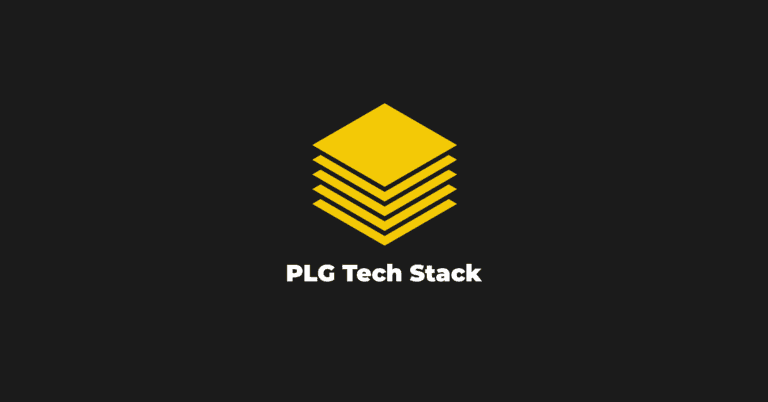What PLG is, why it is a viable option for some companies and how to get started
This is a summary of my presentation on the same topic at the ProductLed Summit in January 2021. You can find the presentation slides here.
Product led growth (PLG) is an end user-focused growth model that relies on the product itself as the primary driver of customer acquisition, conversion, and expansion.
The fundamental difference between product-led organizations versus sales or marketing-led ones is that you're using the product as the primary driver for acquisition and retention. It's a way of thinking that is fundamentally different from many ways that organizations work today. And it's worth noting that PLG might not be right for everyone.
Sales and marketing-led versus product-led
Your company is probably somewhere on a spectrum between sales and marketing-led versus product-led. The goal of PLG is not about replacing or getting rid of your marketing and sales teams but better aligning how these teams work together for success. While many organizations can benefit from PLG, understanding if PLG is right for you is also essential.

The price of the product and the complexity of the sales process determines whether PLG can work for your organization. The higher the complexity, the harder it is for PLG alone to flourish. Suppose your product is a complex sale that involves multiple stakeholders or an executive sponsor. While PLG might help qualify leads, you'll likely still need a sales team to close and shepherd the relationship.
So, what are the criteria for PLG to succeed?
OpenView lists the following as some of the criteria you must meet to adopt a product-led strategy successfully:
- Product-market conditions are right.
- Your product offers a uniquely valuable solution.
- Users can realize significant and ongoing value quickly and easily.
- Your product delivers real value before the paywall.
- Your product can serve as an acquisition channel.
- Your marketing funnels lead to product engagement.
- Your product has a built-in network effect.
- You have product champions who drive internal adoption.
- While you don't need all these criteria to succeed, the more you have checked off on this list, the better positioned you will be to adopt PLG.
But you can also choose to design your business around being product-led. At Atlassian, this started in 2002 when they made it easy for folks to download and pay for Jira without ever having to talk to someone. This sales method was radically different for the time where software was primarily sold, not bought. This method later defined the Atlassian model:
- No dollars for a sales team? The product must sell itself.
- To sell itself, the price must be low.
- Low price? You have to sell lots!
- To sell lots, you must sell globally.
- Customers must choose to buy because you can't sell.
- These decisions dictated the strategy of the business and, ultimately, their success. Plus, PLG can be good for business.
OpenView created the PLG Led Growth Index to track the performance of publicly traded companies that operate as product-led.
.jpg)
And in the case of Atlassian, it's worth noting that R&D expense as a percentage of revenue is much higher than other traditional enterprise software companies.
.jpg)
Their primary focus is on building great products, and they spend accordingly. While other companies are buying users with sales and marketing dollars, Atlassian makes products that folks choose to adopt. And this is key. Because if you don't have a great product, everything else we're talking about is a moot point.
Getting started with product-led
By default, humans are naturally resistant to change. Remember, switching to PLG often affects how people are evaluated, compensated, retained, and how budgets are allocated within the organization. If you've ever tried to make a significant change like this, you probably experienced a bit of resistance.
So how do you avoid this pain and save yourself from a massive headache? First, it starts by understanding how your business grows. While you might already track the standard SaaS metrics like LTV, CAC, and MRR, it's essential to codify your company's growth model. The inputs to this are retention, engagement, and acquisition — the output is growth. To effectively determine the outcome that PLG will have on your business, you need to understand what levers you have at your disposal. For example, how will a 10% lift in activation impact the growth of the business? This measure will help you prioritize potential areas of investment.
To make these conclusions, you need to understand how your customers use your products, what features drive retention, and what active usage looks like, such as typical time to value. Plus, you need to use this data to drive decisions and understand if the changes you're implementing have a positive (or negative) impact on the business.
Finding your story
While it might be easy to jump in once you understand your growth model, it's much more powerful to tell a story from the customer's perspective. We're naturally captivated by good stories. But one of the biggest mistakes people make when trying to implement change is failing to capture the team's imagination and communicate the value this change will provide.
A good story is backed by research; it humanizes the problem you're trying to solve and helps align everyone around a common goal.
It weaves together both the qualitative and quantitative data you have to tell you how things are today and leave room for people to contribute and imagine what a better world might look like tomorrow. At Atlassian, they often did this through customer journey mapping.
How to prove the value
#1 Measure
Often, we make decisions based on gut and intuition. But this leads to our own bias and, ultimately, failure. The only way to make this transition successfully is to think like a scientist and use data to validate (or invalidate) our hypothesis using the scientific method. This method is the cornerstone of how high-performing teams produce winning results, and this process feeds new observations and discoveries leading to new experiments.
#2 Communicate
Now that you can measure your work, being able to communicate the results is essential. You want to make sure there are no surprises and bring people along the journey with you. Try creating a learning encyclopedia of all your experiments and their results. This tool helps you understand the team's contribution and develops a catalog of things that others might use internally.
And because this is likely a new way of working for many folks, you should set clear expectations and timelines. You're evangelizing a process, so you're likely to hit speed bumps and make mistakes. That's fine — just own them. At Atlassian, we held monthly team meetings where we'd communicate our discoveries and answer questions that folks had. This process made it easy to coordinate and align with the other stakeholders internally.
#3 Celebrate the wins
And lastly, celebrate the wins. And remember, change doesn't happen overnight. This philosophy will help you transform the culture over time and give you the proof points that you need to double down on product-led.
Remember, all businesses sit on a spectrum
It's OK to blend the models — just make sure you spend enough time focusing on what's working for your business and measure the results.
Atlassian finally integrated a sales-led approach into their rooted product-led background. While they carried many discoveries that led them to be a successful company into this, like not negotiating on pricing or terms of service, they inevitably embraced this to pursue additional growth as a business.









